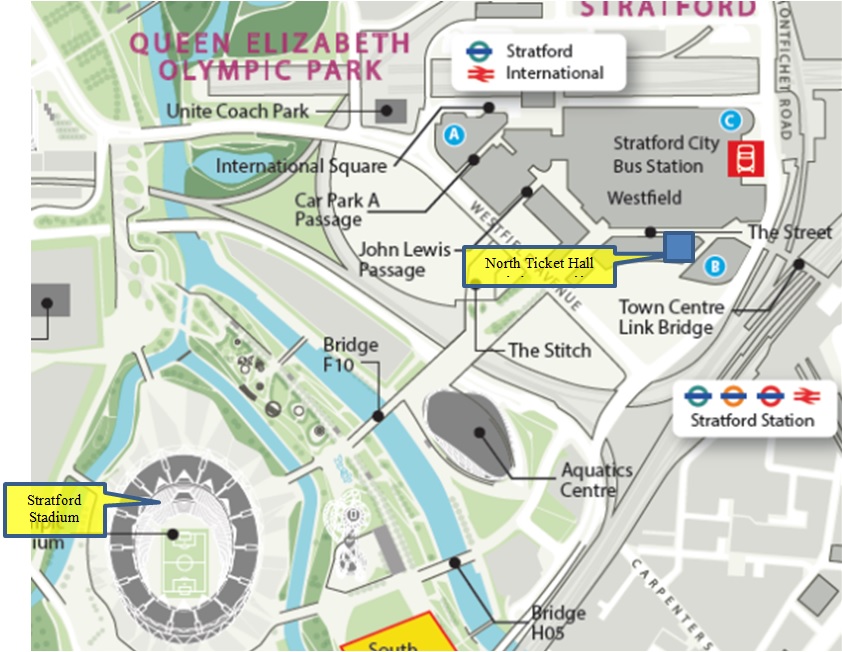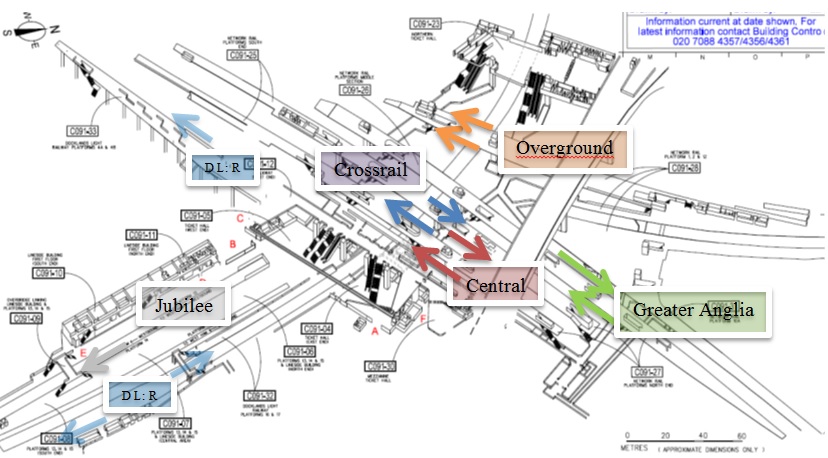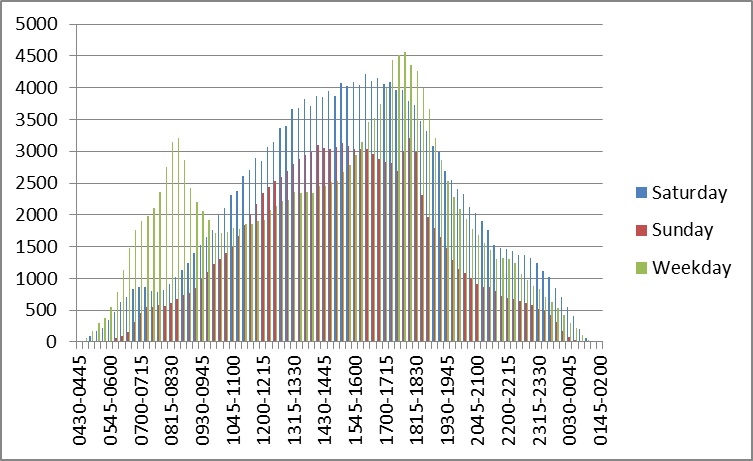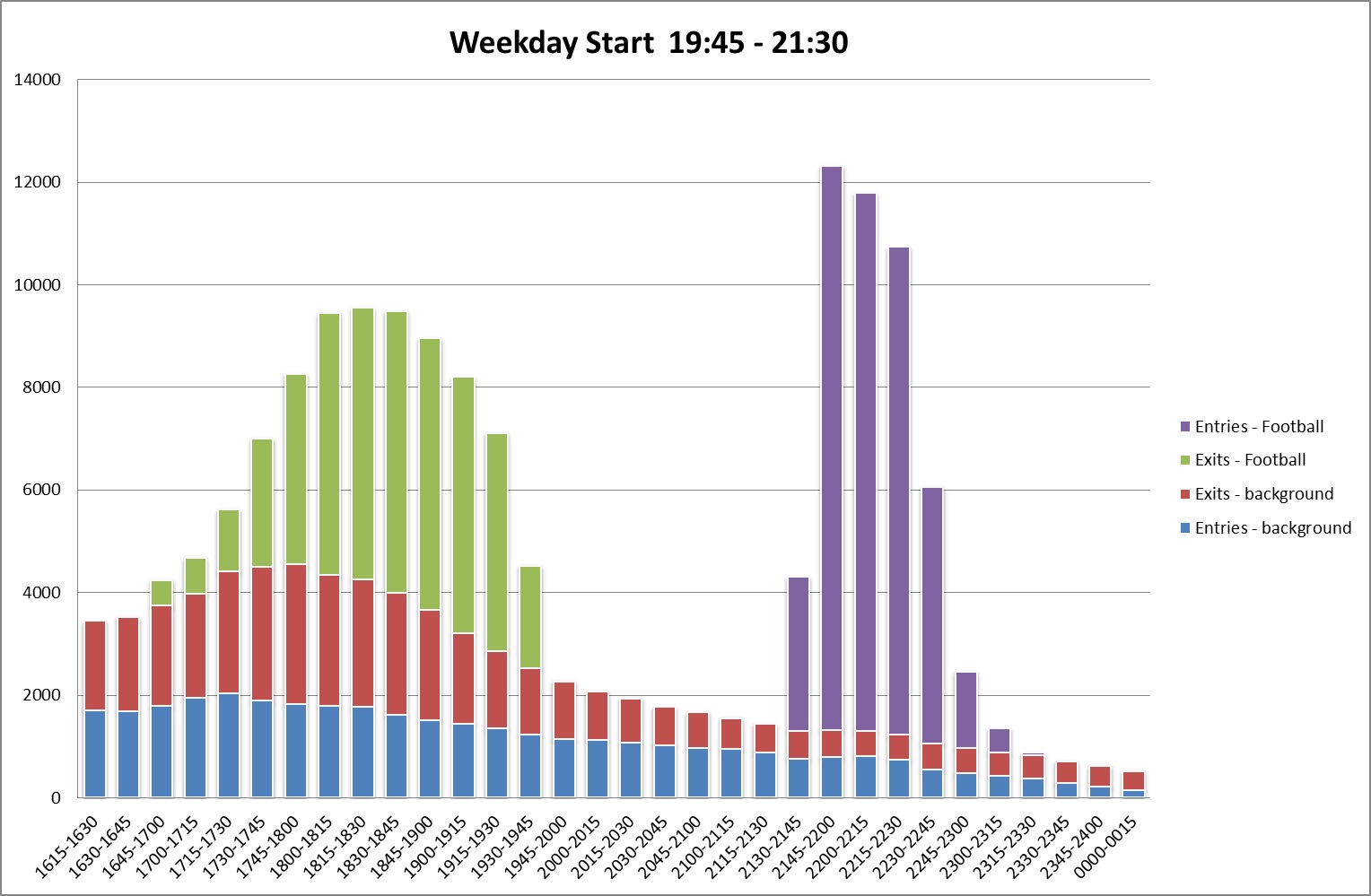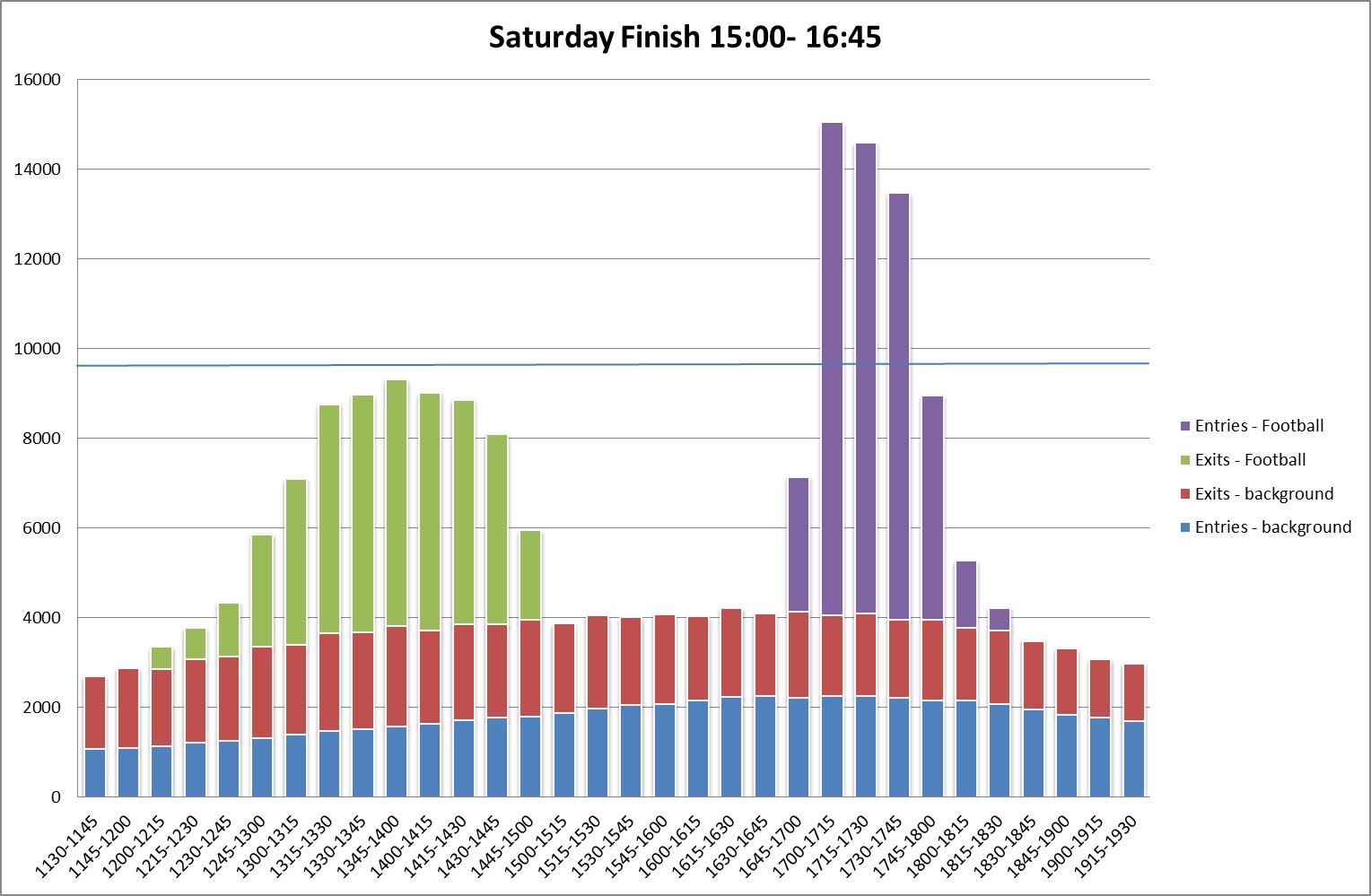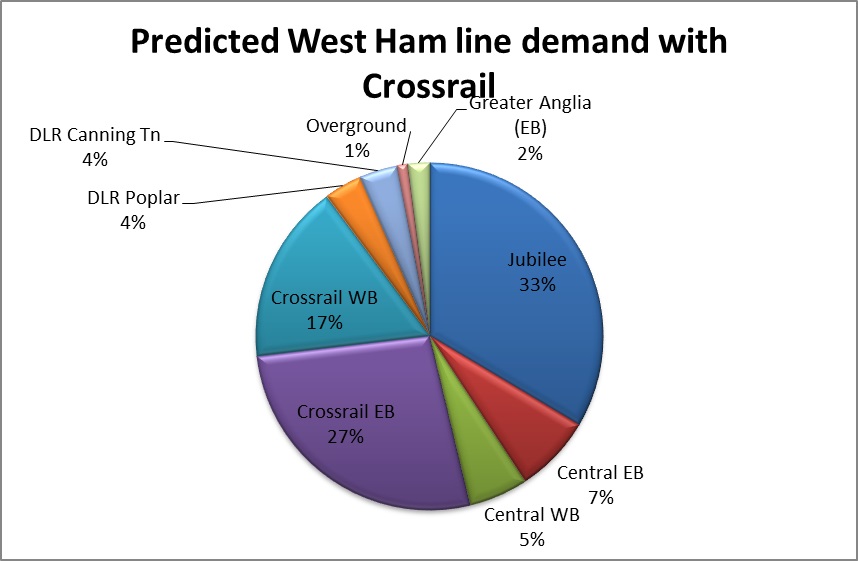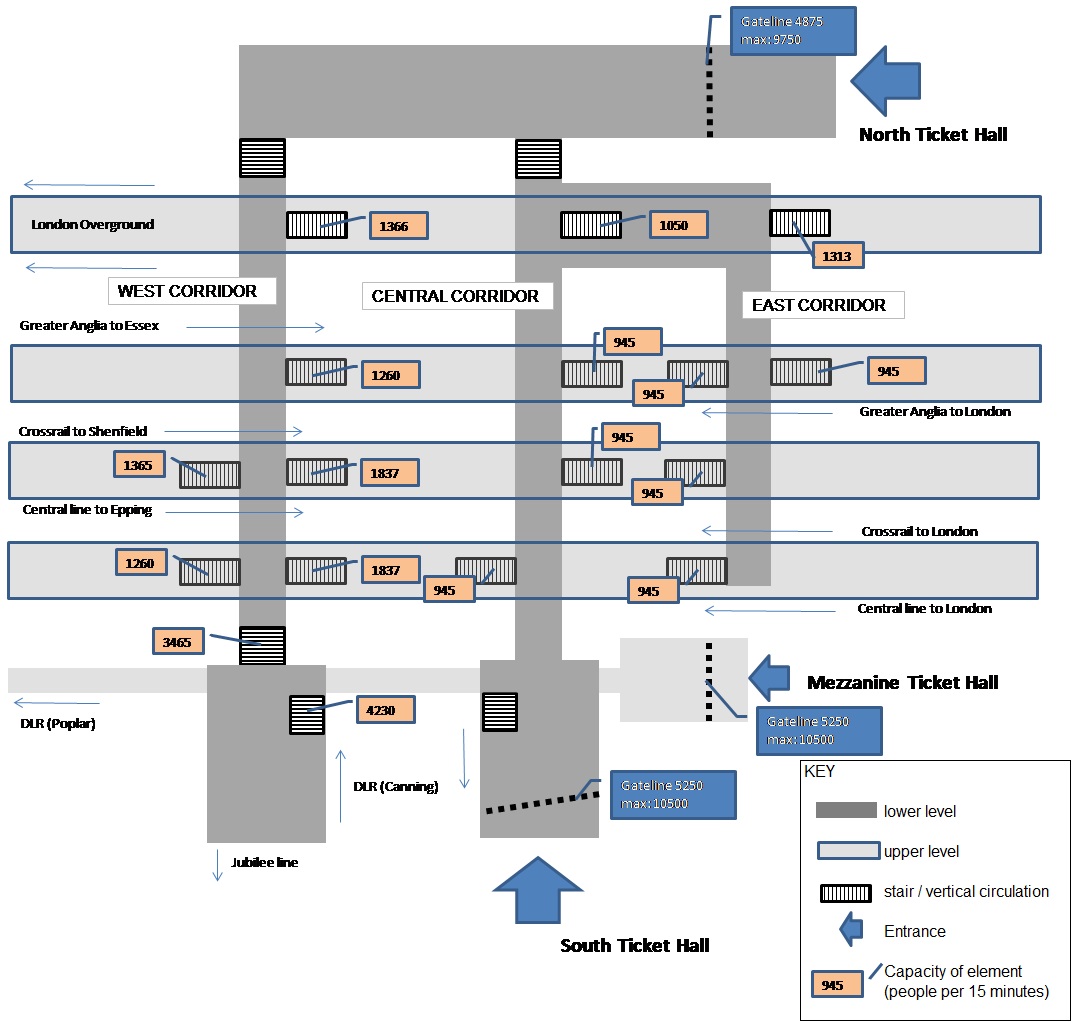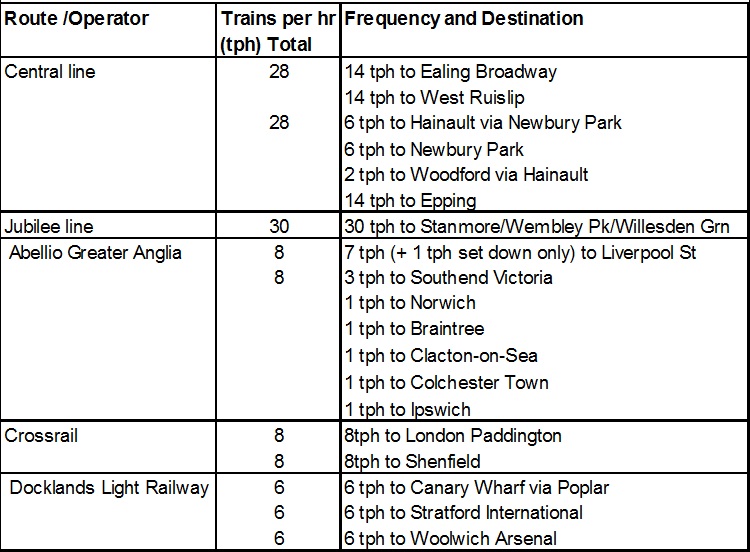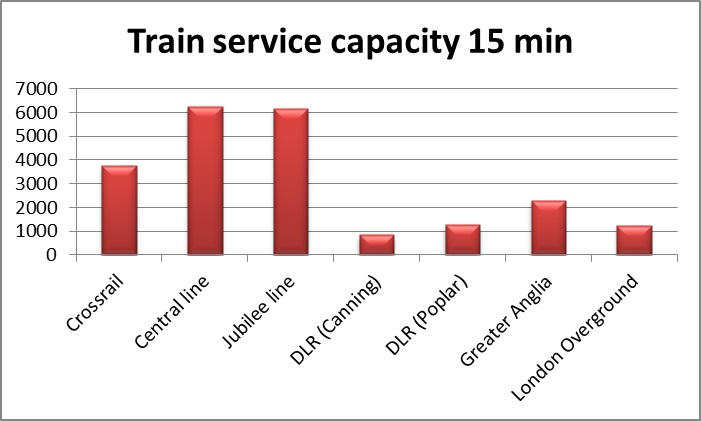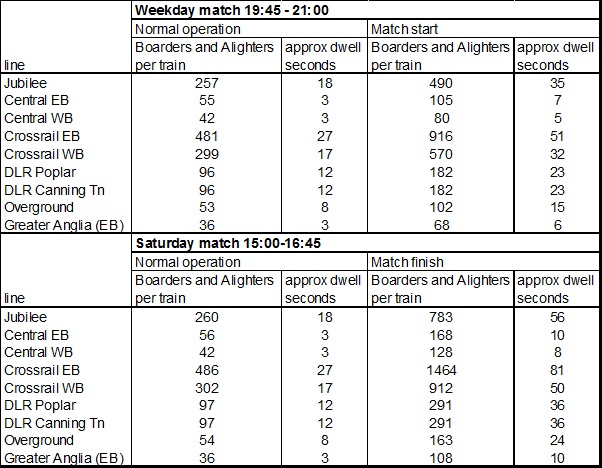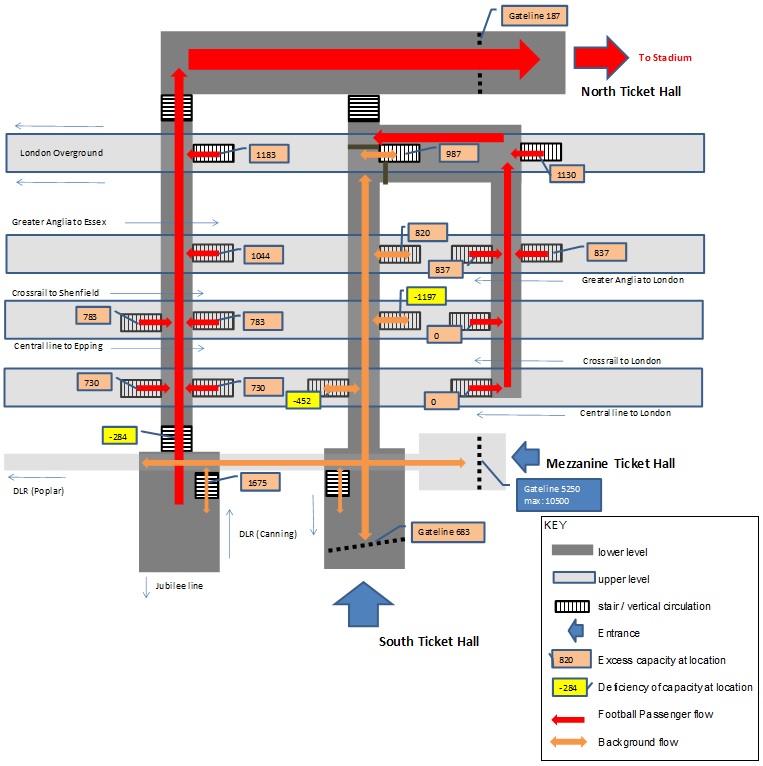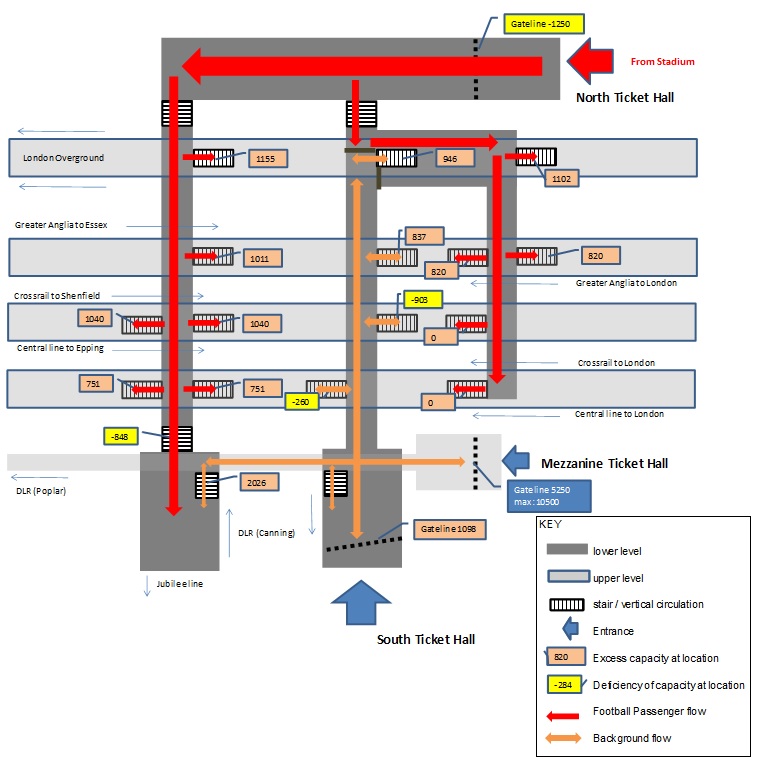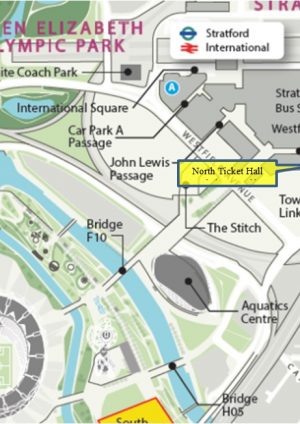
Stratford Station – fit for football?
Document
type: Technical Paper
Author:
Charles Harmer BArch MSc, ICE Publishing
Publication
Date: 31/08/2016
-
Abstract
Stratford station was the main access for the 2012 Olympic Games and during this event the station was successfully operated with very high passenger numbers. West Ham Football Club will move to the Olympic Stadium for the 2016 season and the station will need to manage the regular football matches without the significant resources available at the Olympics.
The purpose of this paper is to gather information on the passenger numbers generated by stadium events and to propose the optimum means of operating the station under these different demand scenarios.
For the Crossrail platforms larger trains will be able to deliver and remove passengers more quickly than the existing rolling stock. The wider range of direct destinations will make Crossrail more popular than the current Liverpool Street to Shenfield service. The consistent all stations stopping pattern will mean that all passengers will want to board the first train reducing waiting time on platforms.
Improved planning and event operation is important in preparation for the operation of Crossrail services at Stratford to avoid extended dwell times.
Passenger flows are used as the basis for proposing alternative operating scenarios. These scenarios are developed using demand data and station staff input. Capacity calculations are used to confirm their workability. Diagrams of the station show flows, gateline directions, and operational measures for each scenario.
The conclusions are that while the station is ‘fit for football’ it will require complex operational systems needing a high level of staff resource. Staffing could be reduced through some minor changes to pinch-points.
-
Read the full document
Background
Stratford station is a key destination and interchange on the Crossrail route. This report assesses the station’s ability to accommodate Crossrail and regular football matches following West Ham United Football Club’s (WHUFC) move to the Olympic stadium in May 2016.
West Ham and the move to Stratford
The Stadium is the largest venue in the Queen Elizabeth Olympic Park (QEOP). The change from its Olympic configuration to its legacy configuration will reduce capacity from 80,000 to 54,000 for athletics and pitch sport events. It will become the home of WHUFC and UK Athletics. QEOP has many pedestrian routes linking the stadium to nearby public transport opportunities including Stratford Station. The key locations and reference points are shown on Figure 1. (LBN 2013)
Stratford Station
Stratford station is a large multilevel railway station (Figure 2). The station is served by National Rail services operated by Abellio Greater Anglia, TfL Rail (to become Crossrail), London Overground, London Underground Limited’s (LUL) Central and Jubilee lines, and by the Docklands Light Railway (DLR). Stratford is in London Travelcard Zone 3 and the station is managed by London Underground.
Stratford station was the main access for the 2012 Olympic Games and during this event the station was successfully operated with very high passenger numbers. With WHUFC’s move to the Olympic Stadium the station will need to cope large crowds associated with football matches but without the resources available at the Olympics.
Station Assessment process
The process of assessing the station’s fitness for football matches involves:
- Collecting passenger demand data for different times of the day and week from gatelines and from LUL survey data in 15 minute intervals
- Collecting Match demand data in 15 minute intervals from WHUFC and Rugby World Cup which is being partly held at the stadium in September 2015.
- Use LUL survey data and TfL models to forecast future with Crossrail travel patterns to produce interchange matrices for different time periods.
- Assess capacities of key elements of the station identifying ‘pinch points’ using formulas from LUL’s Station Planning Standards and Guidelines
- Test demand against capacity to develop operating scenarios and consult with station staff regarding operability
- Propose solutions suited to anticipated scenarios.
Expected Passenger Numbers – Background Demand
Gateline data is available for Saturday, Sunday and an average weekday. In addition for weekdays there is a rolling programme of surveys that provides interchange within the station. This demand data is available on LUL’s Rolling Origin and Destination Survey (RODS) database.
Saturday is the busiest day overall for entries and exits although interchange is less than during the week. On weekdays the evening peak is busier than the morning peak due to people visiting the Westfield shopping centre.
Interchange proportions are highest in the morning and evening peaks. At weekends around 20% of passengers are interchanging between lines.
Expected Passenger Numbers – West Ham Football Demand
Match demand is based on stadium capacity and the proportion expected to arrive by train. WHUFC games have attendances that fill available capacity at the current stadium, Boleyn Ground. This is due to a pricing policy adopted by WHUFC that reduces prices to ensure capacity attendance.
With WHUFC’s move to the Olympic Stadium there will be a considerable increase in capacity from 35,000 at Boleyn Ground to 54,000 at Stratford stadium. The new stadium is being widely marketed with capacity attendances expected for at least the first year.
Background passenger numbers will already be high when football matches are played, mostly on Saturdays. WHUFC has only four games planned for days other than Saturday (Table2).
It is expected that around 80% will of football supporters will arrive by rail nearly all of these will travel via Stratford station with a limited number travelling via Stratford International (4%) and Hackney Wick (1%).
Expected Passenger Numbers – at Football matches
Modelling undertaken as part of the Event Management Plan (EMP 2015) indicates that ‘For the 2015 events it is estimated that the total clearance time will be 1 hour and 10 minutes and include a 15 minute walk time from the Stadium to the station’.
Background demand data and expected football passenger traffic for the two busiest situations are shown in Figures 3 and 4. The football passenger traffic is based on stadium capacity, the proportion travelling by rail and expected arrival and departure rates. The two busiest match situations have been identified as weekday 19:45 start and Saturday 16:45 finish (Table 2).
Destination lines within Stratford station
The proportions of passengers using each line are based on modelled data with Rugby World Cup travel data used as a proxy for visiting football passengers and the additional WHUFC passengers. Although this data is event specific the same rail routes are expected to be used by non – local football passengers.
Station Capacity
Station Planning Standards and Guidelines (SPSG) identify the following Levels of Service (LoS) criteria for different station areas for normal operation. Greater crowding levels are accepted during special events.
Station Area Level of Service Normal Operation – Quantitative Measure Passageways – one way LoS D 50 passengers per minute per metre Passageways – two way LoS C 40 passengers per minute per metre Stairs – one way LoS D 35 passengers per minute per metre Stairs – two way LoS C 28 passengers per minute per metre Platforms LoS C 0.8 m2 per person (1.25 persons per m2) Gateline – normal operation – 25 passengers per minute Gateline special operation – 50 passengers per minute Table 3 – Assessment Criteria: (SPSG 2009)
Key Pinch points and their Capacities
The capacity at critical points within the station is derived using criteria in Table 3. Figure 7 is a simplified station plan showing the main capacity constraints at Stratford station. These critical points are gatelines and vertical circulation (stairs and escalators). The corridors and platforms have greater capacity than these elements.
There are three sub surface corridors serving the main platforms at Stratford.
- The West corridor forms a route from the Jubilee line to the North Ticket Hall (TH) and allows access to all platforms.
- The Central corridor gives access from the North TH and South TH to all platforms.
- The East corridor is not well used in normal operation but can provide access to all platforms from the North TH only.
Train services
The train service capacity is considerable at Stratford with 136 trains per hour (tph) off peak (Table 4). When background demand is included train capacity is only a constraint in the weekday PM peak start when eastbound trains will be full.
Capacity for rolling stock is based on a maximum of 4 people per m2.
On Crossrail platforms the longer trains with more doors per carriage will deliver and clear passengers more quickly than the existing rolling stock. Extending the service through central London will increase the number of eastbound passengers. The consistent all stations stopping pattern will mean that all passengers will catch the first train reducing waiting time on platforms.
Boarding and Alighting (Platform Train Interface)
The amount of time spent boarding and alighting could disrupt busy services.
Approximate dwell times shown in Table 5 are based on the number of passengers per double door with an allowance for passengers unevenly distributed between doors. The average boarding and alighting time per passenger is based on a Department for Transport dwell time study (Fujiyama 2008). At match finish Crossrail trains will have extended dwell times which can be accommodated in the off peak timetable.
Dwell time risk can be controlled through the development and implementation of the train dispatch processes. Rail Industry ‘Standard for Passenger Train Dispatch and Platform Safety Measures’ by the Rail Safety and Standards Board (RSSB 2013) sets out the dispatcher requirements.
Management Strategies
At Upton Park, the nearest station to Boleyn Ground, access is restricted to prevent platform overcrowding following a football match. This approach cannot be applied at Stratford for a number of reasons:
- Interchange ranges from 17-52% of the total. Interchange will expect to be given priority as it cannot be easily controlled.
- Trains from Stratford serve multiple destinations some served by infrequent services. Restricting access could cause significant delay for passengers using less frequent services.
- Unrestricted access for non-football passengers must be prioritised to satisfy Planning Conditions which require that all spectators ‘can travel to and from the venue safely and efficiently whilst minimising the impact on local residents and businesses’. (LB Newham)
- The North TH is the closest to the stadium but does not have enough capacity for peak match finish flows, therefore other entrances will need to be used.
- For West Ham matches Pudding Mill lane could be used to remove the 4% of passengers using the DLR towards Poplar from Stratford station. This would not overload Pudding Mill Lane (if managed) and will help reduce numbers at Stratford.
Operating concepts
The Stratford station Local Operating Agreement states that for event finish:
Ticket gates at the Northern and Mezzanine Ticket Halls will be left open during the busiest egress period. The gates at the South Ticket Hall will remain under normal operation.
It is intended that platform 3 will be alighting only and platform 3A will be boarding only to address the balance between the two platforms serving the westbound central line. (LU Area Manager 2015)
The current strategy seeks to get passengers out of the station from the Central and Jubilee lines which are the busiest routes. With Crossrail passenger numbers will increase on the Crossrail/Central line platforms the subways and connecting stairs.
The underlying operating concepts that will maximise efficiency of circulation are listed:
- Making best use of capacity of the station uses the principle that one way operation increases capacity of stairs and corridors by around 25% (SPSG 2009).
- One-way circulation avoids conflicts and decreases passenger discomfort involved in fighting against a football crowd. This will require measures such as verbal announcements, temporary signage and station staff at key locations.
- Get passengers quickly off the platforms – operate platform stairs as one-way.
- Separation of football passengers by use of Northern ticket hall, making it entry or exit only as appropriate and operate with the gates open to increase capacity.
- Dynamically change operations as passenger numbers fluctuate to get passengers through the station as quickly as possible.
- Manage Platform Train Interface on non-terminating platforms to maintain service regularity particularly on the Crossrail platforms which will have the longest dwell times.
Start of Match – weekday 19:45
To allow the station to operate efficiently and permit one-way operation for football passengers the central corridor can accommodate much background demand and interchange in a two-way operation.
For arriving passengers announcements and temporary signage will direct football passengers to east or west corridors from where they will exit the station by the Northern TH which is the most convenient point for access to the stadium. Non-football passengers will be directed to the central corridor for exit via the Southern TH.
This arrangement will not work for the weekday 19:45 start because the background flow is too high for the central corridor. It will however work for other match starts when the interchange is less.
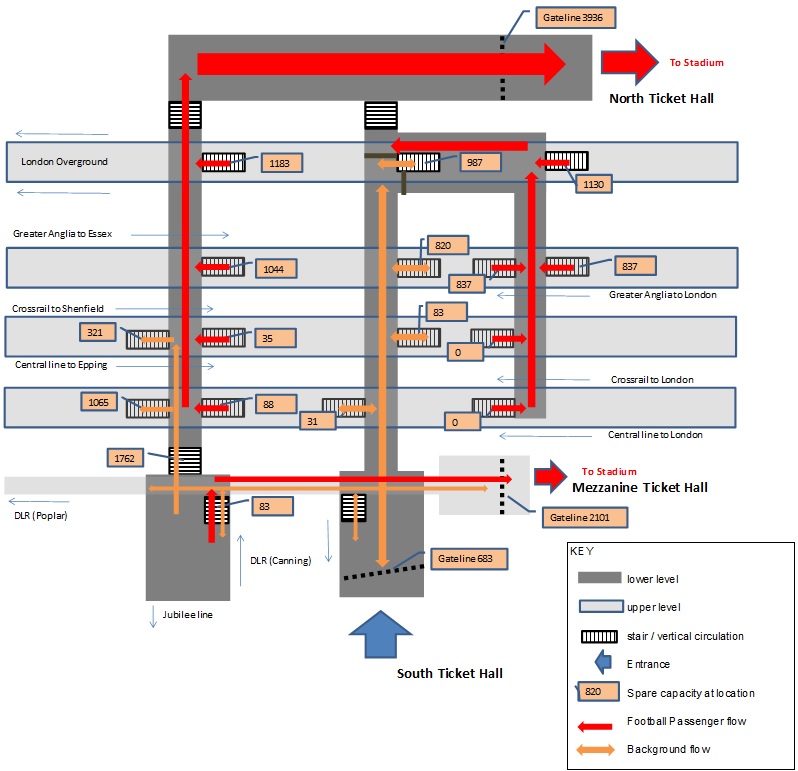
Figure 10 – Proposed event start (weekday 19:45) circulation if central corridor becomes overloaded (Capacity minus Demand) When the central corridor becomes too congested Jubilee line passengers will need to be given access to the Crossrail/Central line platforms via the west corridor. This is shown in Figure 10. Dynamically changing operations as crowds fluctuate can minimise disruption and speed passengers through the station.
As the station becomes busier more complex operational strategies are required.
End of match – Saturday 16:45
The end of game operating strategy is a reverse of the start of game strategy. However as Figures 4 and 5 show flows after a match are more intense than match start. It is also particularly important to allow background passengers off the platforms and to avoid conflict between them and football passengers.
It would simplify access to the station if all football passengers only used the Northern TH. The proposed system is to allow background access via southern entrance with the Northern TH only for football passengers. Spectators can be held outside this entrance for limited periods but if they are held for extended periods large numbers may divert to other entrances.
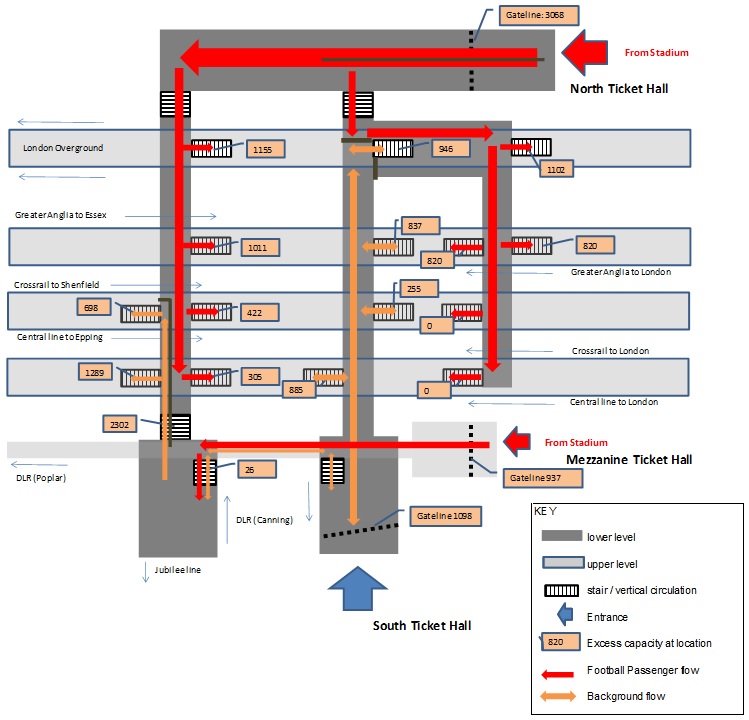
Figure 12 – Proposed event finish (Saturday 16:45) circulation with east / west corridor split at NTH and Jubilee interchange via western corridor (Capacity minus Demand) When the Northern TH becomes overloaded football passengers wanting the southern platforms (Jubilee and DLR) can be routed to the Mezzanine ticket hall. Signage on the routes to the station will aim to split spectators into two groups by their desired rail line. Jubilee and DLR passengers could then be directed to the Mezzanine TH if queues build up at the Northern TH.
Should the central interchange corridor become overcrowded passengers interchanging from the Jubilee can be directed to the west corridor.
Recommendations
The station layout is complicated following a history of ad hoc expansion. It is therefore not easy to operate and will require higher staffing levels. However the three subways offer the potential to separate football and non-football passengers. This in turn facilitates one-way operation of football flows increasing efficiency and improving passenger experience.
For alighting passengers this separation would start with on-train announcements advising football passengers to use stairs at the end of platforms and non-football passengers to use the central stairs. Temporary platform signage would direct ‘WHUFC exit only’ to east or west corridors and ‘other passengers’ to the central corridor. Station staff would ensure that football passengers did not use the central corridor stairs.
For boarding passengers directions from the stadium will lead them to the Northern TH. Jubilee and DLR passengers would queue separately and would be sent to the Mezzanine TH when Northern TH queues became too long. It is likely that many WHUFC football passengers will be familiar with the location so any management system that causes excessive delay will be circumvented using local knowledge.
Replacing glass screens with opening screens in the Northern TH; widening the western corridor Jubilee line stairs and increasing the number of stairs from the central corridor to the Central line / Crossrail platforms are measures that would remove current pinch points. These measures will help make the station ‘fit for football’.
Stratford station as well as being a strategic interchange is beside a major shopping complex and is at the centre of a huge redevelopment area. This redevelopment will bring almost 42,000 jobs and 8,000 homes (SRP 2015) to the area. Against this background Crossrail and WHUFC, although significant, are only part of the constant change taking place at Stratford.
References
- BBC sports website, 2015: West Ham United Fixtures, available at: http://www.bbc.co.uk/sport/football/teams/west-ham-united/fixtures (accessed July 2015)
- CTOP 2015, Crowd and Transport Operations Plan, by Momentum Transport Planning May 2015. Internal document.
- DfT 2007, Document “RSC” – Rolling Stock Capacities 2007, available at: https://www.gov.uk/government/uploads/system/uploads/attachment_data/file/4153/tpecapacities.pdf (accessed July 2015)
- EMP 2015: Event Management Plan Transport Operations Event Management Plan 37: Table 16 – Rugby World Cup 2015 Origin of Spectators 26 June 2015. Internal document.
- Fujiyama T, Nowers J, Tyler N; 2008, Investigation into train dwell time, research report submitted August 2008 to UK Department for Transport, available at: URL:http://discovery.ucl.ac.uk/1363563/
- Harris NG, Anderson RJ, 2007, An international Comparison of Urban Rail Boarding and Alighting Rates, Proceedings of the IMECH E Part F Journal of Rail and Rapid Transit, 221(4), 521-526
- London Borough of Newham (LBN), 2013: planning report D&P/2334m/02 26 June 2013 Olympic Stadium Site London Legacy Development Corporation (in the London Borough of Newham) planning application no. 12/90349/FUMODA: available at: http://www.newham.gov.uk/Pages/Category/Planning.aspx (accessed July 2015)
- LUL 2009, London Underground Train capacities, June 2009, available at LUL intranet.
- LUL Area manager 2015, Local Operating Agreement (between station users) 30 May 2015 Version: RCS Draft V3. Internal document
- LULSP 2015, London Underground Ltd Station Plans, available at: LUL intranet
- MS 2011, Stratford Regional Station Legion modelling assessment including Westfield Games Time Demand, Movement Strategies October 2011. Internal document.
- NR 2011, Station Capacity Assessment Guidance – Network Rail: available at networkrail.co.uk/…%20stations/station%20capacity%20assessment. (accessed July 2015)
- NR 2015, National Rail Timetables 2015, available at: nationalrail.co.uk/times_fares/timetables.aspx (accessed July 2015)
- Olympic Park Legacy Company, 2012, Creating the Queen Elizabeth Olympic Park February 2012, available at: [email protected]
- RODS 2015, Rolling Origin and Destination Survey 2014, RODS database: available at: London Underground Intranet (accessed July 2015)
- RSSB 2013, Standard for Passenger Train Dispatch and Platform Safety Measures RIS-3703-TOM by the Rail Safety and Standards Board (RSSB). Available at: http://www.rssb.co.uk/rgs/standards/RIS-3703-TOM%20Iss%202.pdf (accessed July 2015)
- SPSG 2009: Station Planning Standards and Guidelines, London Underground Ltd August 2009 internal document.
- CRSR 2010: Crossrail Sponsors Requirements Version 4.1.0, 10 March 2010, internal document.
- SRP 2015: Stratford’s Future, Stratford Renaissance Partnership, available at: http://stratfordlondon.info/developments/stratford-developments (accessed July 2015)
- TfL 2015, Transport for London Events Schedule: (06 Sep 2014 to 08 Mar 2015) internal document
-
Authors
